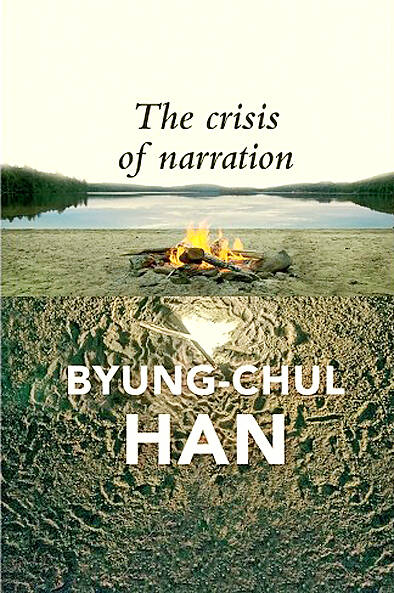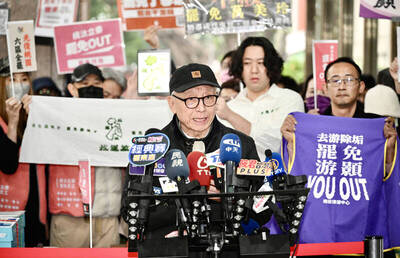In Charlie Kaufman’s puppet animation Anomalisa, everyone looks and speaks the same. It’s as though a scene in an earlier Kaufman-penned film, Being John Malkovich, in which Malkovich surveys a restaurant from his table and notices everyone — waiters, diners, perhaps even a passing dog — have his face and voice, has gone global.
No one is immune: at one point, the mouth of the narrator, a motivational speaker called Michael Stone, falls from his face into his hands and chatters away all by itself. The guru’s improving homilies are so artificially intelligent, predictable and effectively transhuman, that they need no warming body or soul to sustain them.
But that’s not the worst of it. Each puppet is incessantly enjoined by life coaches and other professional fascists to express their individuality. But how can they since they are all the same and have access to the same narrative codes? Such is the existential tragicomedy of modern humanity.

Kaufman’s puppet hell is no fairytale for the Korean-German philosopher Byung-chul Han, but captures truths of our information-saturated, phone-fixated, ChatGPT-enabled age. For Han, Homo sapiens have degenerated into “phono sapiens.”
A nice phrase, but what does it mean? Han’s suggestion in more than 20 books since 2015 is that we are all Big Brothers now. The smartphone is Catholicism with better technology, a modern rosary that is handheld confessional and effective surveillance apparatus in one. Han wrote in his 2017 book Psychopolitics that “power operates more effectively when it delegates surveillance to discrete individuals.” Elon Musk and Mark Zuckerberg don’t need the rats, torture chambers and 24/7 propaganda that kept Big Brother in power. The tech bros just need your connivance with your own oppression.
STORYSELLERS, NOT STORYTELLERS
In this new book, Han describes the deleterious effects of that degeneration on storytelling. Storytelling used to bind us communally over the campfire; it connected us to our pasts and helped us imagine hopeful futures. The digital screen has replaced that fire, making us individuals performing factitious versions of ourselves to unseen peers, tailoring our looks, lives and opinions to fit prevailing norms.
“This smart form of domination constantly asks us to communicate our opinions, needs and preferences, to tell our lives, to post, share and like messages,” Han writes.
We were storytellers; we have become storysellers, he says — a phrase he likes so much he repeats it frequently in this book.
Humans degenerate, as Han has put it elsewhere, into generative organs of capital, reducing ourselves obligingly to monetizable data sets that can be controlled and exploited, making Musk one of the world’s richest men and busting us down into content providers to extend his and his coevals’ grisly business models. We deploy heart-rate data from Fitbits to tell yawnsome just-so stories about fitness journeys; we embellish the tale of what we did on our holidays with selfies and soft-porn snaps of the meal we had at that cute bar we found, according to the permissible parameters of human leisure time, in Oslo. Something has gone missing in all these stories: our individuality, our humanity, our ability to tell convincing narratives rather than perform ourselves.
And when we aren’t producing stories, we are consuming them. Netflix chief executive Ted Sarandos once told me his company’s business model was all about giving customers what they want. What he didn’t say was that Netflix (and other streaming platforms) make content that is easily consumable, with narratives that follow pre-established patterns, to induce us to binge watch, rather than giving airtime to unheard voices or ways of telling stories that don’t fit with the algorithms. The result?
“Viewers are fattened like consumer cattle,” Han writes. “Binge watching is a paradigm for the general mode of perception in late modernity.”
And yet phono sapiens aren’t just congenital liars, self-presenting ourselves as we are not. We have also become caught up in the countervailing urge to disclose everything about ourselves, for truth telling, for unlimited transparency. We follow the infernal exhortations of the titular tech-giant of Dave Eggers’s 2013 novel The Circle: “Secrets are lies. Sharing is caring. Privacy is theft.”
These slogans are phono sapiens’ commandments.
As a result we have become Pinocchios with cute button noses, internalizing norms of full disclosure and personal transparency (politicians’ deleted WhatsApp messages notwithstanding) since these data sets are monetizable assets.
Consider how Instagram offers tutorials in how to tailor narratives to meet demand and acquire that fool’s gold, influencer status.
“Where you go, what you eat and drink, who you see and what’s most memorable,” suggests one online course. “These are the typical fodder of Instagram Stories — seconds-long glimpses of people’s lives, shared on Instagram for only 24 hours.”
Hannah Arendt saw the banality of evil in Adolf Eichmann; had she lived to download Instagram, she might have seen the banality of storytelling. Keep it light, bite-sized and ephemeral. This is the fodder that best feeds the machine.
I found Han most relatable when he reflects on the strange death of storytelling in GP surgeries.
“The spirit of narration does not fit with the logic of efficiency,” he notes.
Doctors have neither the time nor the patience to listen. It’s a bracing point, but reality outstrips it: instead of telling my GP my ailments, today I am encouraged to post symptoms on an app called Dr iQ, which is designed to make medical care more efficient. But, as with Instagram Stories, only certain forms of narration are permissible: the app encourages patients to cram symptoms into tick boxes that seem devised expressly to prevent one giving a rich, subjective account of how one is feeling. We are reduced to identikit puppets with identikit symptoms. Quality of care? A tale told by an idiot, signifying nothing.
I am very fond of Han’s writing. His 100-page jeremiads with short chapters and gnomic sentences are all animated by a Cassandra sensibility that expects warnings to go unheeded. Amusingly, though, he couldn’t tell a good story to save his life. Like a lot of men (and it is always men), Han writes as though he’s never been contradicted. He’s apt to issue purportedly incontrovertible apercus that had me writing “No!” repeatedly in the margins.
He writes: “Today, children have become profane, digital beings.”
What, all children? Children, I suspect, are capable of creating sites of resistance rather than doomed to be dupes of phono sapiens’ folly. The truth is more complicated. The best stories are more nuanced phenomena than Han allows.
Han proves addicted, like many German intellectuals since Goethe, to expressing himself in the imperious maxim. It’s a writerly tic that brooks no dissent. But that’s a rhetorical disaster for a book that is supposed to be championing the opposite, namely narrative storytelling in all its polysemous perversity. The best stories, after all, are rich in complexity, openness, self-doubt, conflicting arguments, hope and human warmth. Sad to say, these are all qualities that this book, for all Han’s lapidary brilliance, lacks.

The Democratic Progressive Party (DPP), Chinese Nationalist Party (KMT), and the country’s other political groups dare not offend religious groups, says Chen Lih-ming (陳立民), founder of the Taiwan Anti-Religion Alliance (台灣反宗教者聯盟). “It’s the same in other democracies, of course, but because political struggles in Taiwan are extraordinarily fierce, you’ll see candidates visiting several temples each day ahead of elections. That adds impetus to religion here,” says the retired college lecturer. In Japan’s most recent election, the Liberal Democratic Party lost many votes because of its ties to the Unification Church (“the Moonies”). Chen contrasts the progress made by anti-religion movements in

Taiwan doesn’t have a lot of railways, but its network has plenty of history. The government-owned entity that last year became the Taiwan Railway Corp (TRC) has been operating trains since 1891. During the 1895-1945 period of Japanese rule, the colonial government made huge investments in rail infrastructure. The northern port city of Keelung was connected to Kaohsiung in the south. New lines appeared in Pingtung, Yilan and the Hualien-Taitung region. Railway enthusiasts exploring Taiwan will find plenty to amuse themselves. Taipei will soon gain its second rail-themed museum. Elsewhere there’s a number of endearing branch lines and rolling-stock collections, some

Last week the State Department made several small changes to its Web information on Taiwan. First, it removed a statement saying that the US “does not support Taiwan independence.” The current statement now reads: “We oppose any unilateral changes to the status quo from either side. We expect cross-strait differences to be resolved by peaceful means, free from coercion, in a manner acceptable to the people on both sides of the Strait.” In 2022 the administration of Joe Biden also removed that verbiage, but after a month of pressure from the People’s Republic of China (PRC), reinstated it. The American

This was not supposed to be an election year. The local media is billing it as the “2025 great recall era” (2025大罷免時代) or the “2025 great recall wave” (2025大罷免潮), with many now just shortening it to “great recall.” As of this writing the number of campaigns that have submitted the requisite one percent of eligible voters signatures in legislative districts is 51 — 35 targeting Chinese Nationalist Party (KMT) caucus lawmakers and 16 targeting Democratic Progressive Party (DPP) lawmakers. The pan-green side has more as they started earlier. Many recall campaigns are billing themselves as “Winter Bluebirds” after the “Bluebird Action”